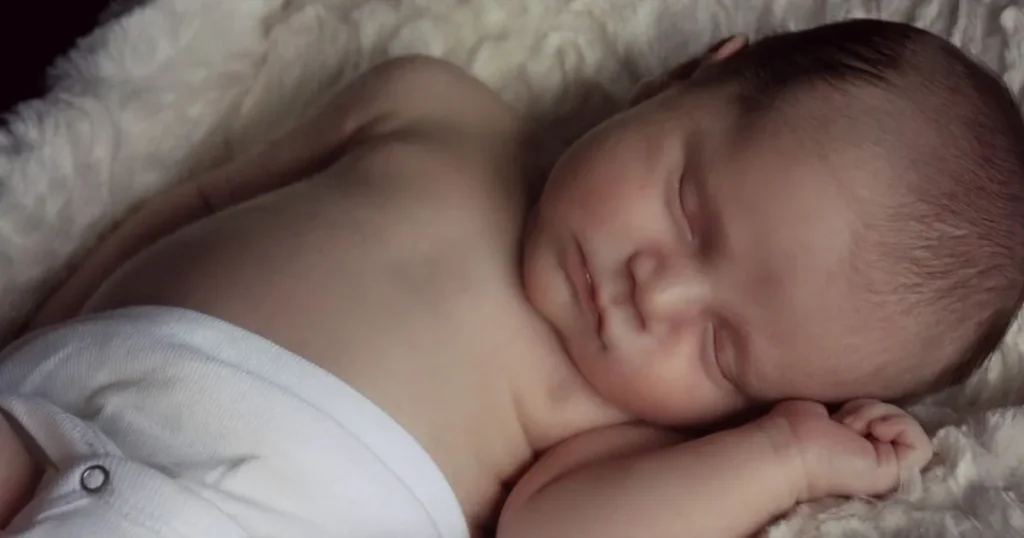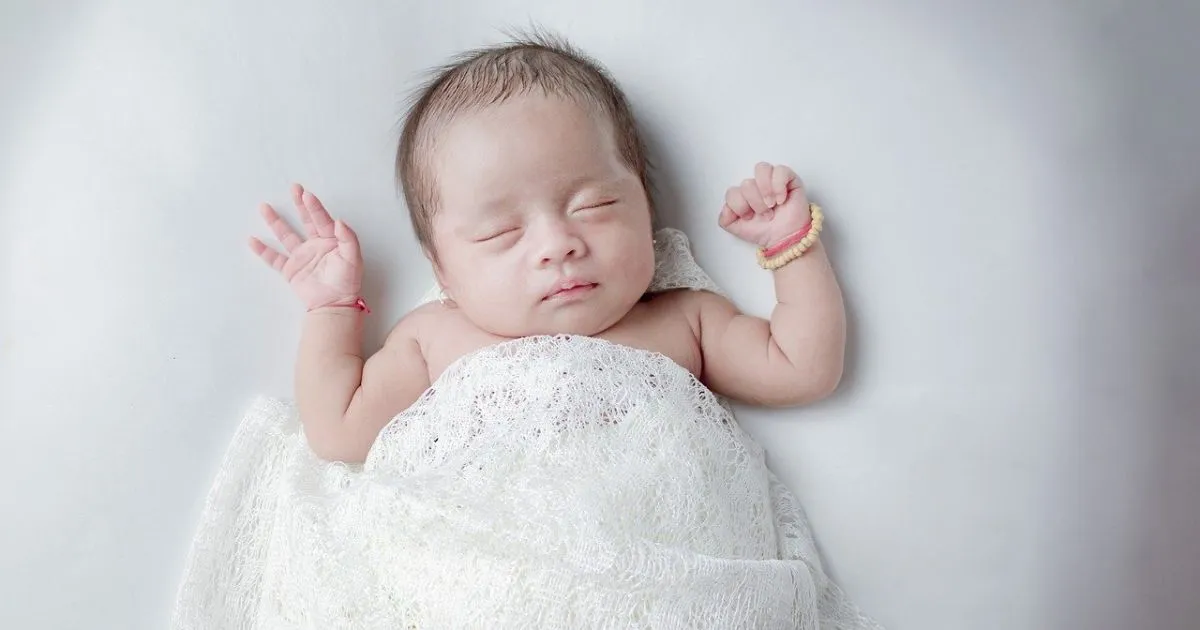If you’ve ever experienced the frustration of gently placing your baby in their crib, only to have them wake up the moment their body touches the mattress, you’re not alone. Many parents face this challenge, and it can be emotionally taxing. The good news? There are ways to break the cycle and help your baby sleep more soundly, even after being put down. In this article, you’ll discover the reasons behind this common issue and practical, evidence-based solutions that can help you and your little one sleep better.
Table of Contents
Why Does My Baby Wake Up When Put Down?
Before diving into strategies for solving this problem, it’s important to understand why it happens in the first place. Several factors could be contributing to your baby waking up the moment they’re laid down. Here’s a breakdown of the most common reasons:
1. The Startle Reflex (Moro Reflex)
When babies are born, they have a reflex known as the Moro reflex, or startle reflex. This is a sudden reaction to feeling unsupported or as though they are falling. When you transition your baby from your arms to their crib, this reflex can trigger, causing them to wake up and feel anxious. The sensation of being laid down, even gently, can sometimes be enough to startle them awake.
2. Desire for Comfort and Security
Babies are hardwired to seek comfort and security, especially when they’re resting or sleeping. Holding your baby provides warmth, closeness, and reassurance. Once they’re placed in the crib, they may feel the absence of that comforting presence and wake up in search of it. Their natural instinct is to stay close to you, which is why they often wake when separated from you.
3. Changes in Environment
Sudden shifts in environment can also contribute to sleep disruptions. When you’re holding your baby, they’re surrounded by the warmth of your body, the sound of your heartbeat, and the gentle movement of your arms. Once placed in the crib, your baby may wake up because they’re no longer in that familiar environment. Changes in temperature, light levels, and even the texture of the crib mattress can make them feel unsettled.
4. Separation Anxiety
As babies grow, they develop attachment to their caregivers. Around 6 months of age, some babies may begin to experience separation anxiety. If your baby is particularly attached to you, they may feel distress when placed down and separated from you, even if it’s just for a nap.
How to Help Your Baby Stay Asleep When Put Down
Now that we’ve explored the common causes behind your baby’s wake-ups, let’s discuss effective strategies you can try to help them stay asleep once they’re in their crib.
The Art of Gentle Transitions
If your baby wakes up as soon as you lay them down, the way you transition them from your arms to the crib may need adjustment. Rather than laying them down all at once, try these gentle techniques:
- Slowly Lower Them Into the Crib: Instead of suddenly placing your baby down, gradually lower them into the crib while still holding them. This slow transition can help reduce the startle reflex. Start by lowering their feet into the crib first, and then the rest of their body, making sure you’re still offering support.
- Keep Your Hand on Their Chest: Once your baby is in the crib, gently place your hand on their chest or belly. This physical contact helps reassure them and provides some comfort as they adjust to being in their crib.
- Keep the Room Calm and Cozy: To help your baby feel safe, make the crib environment as comforting as possible. You can use a soft sleep sack or swaddle (for younger babies) to give them a sense of security. You might also want to try a white noise machine to mimic the sounds of the womb, which can have a calming effect.
- Warm the Crib Beforehand: Babies tend to wake up if they feel a temperature change, so try warming the crib with a heating pad or blanket before you place your baby down. Just be sure to remove the heat source before putting them in the crib.
Gradual Sleep Training Methods
If the gentle transition method doesn’t work, you might want to consider a more structured approach to help your baby develop the ability to self-soothe. Gradual sleep training methods can teach your baby to feel more comfortable being put down and falling asleep on their own.
The Ferber Method
The Ferber method, also known as “graduated extinction,” involves letting your baby cry for progressively longer intervals before offering comfort. Here’s how it works:
- Put Your Baby Down Drowsy but Awake: The goal is to put your baby in the crib when they’re drowsy, but not fully asleep. This helps them learn how to fall asleep on their own without relying on being rocked or nursed to sleep.
- Gradually Increase the Time Between Checks: Start by letting your baby cry for a short time, say 3 minutes, before going in to comfort them. Gradually increase the time between checks, such as 5 minutes, 10 minutes, and so on. Each time you go in, comfort your baby without picking them up, and then leave again.
- Consistency is Key: It may be hard at first, but with consistency, your baby will learn to self-soothe and eventually stop waking up when put down.
The Chair Method
Another gradual sleep training approach is the Chair Method. This involves sitting by your baby’s crib and offering reassurance, but without picking them up.
- Sit Near the Crib: When it’s time for bed, place your baby in the crib and sit next to it. Offer comfort by gently patting or reassuring your baby with your voice.
- Gradually Move Further Away: Over the course of several nights, slowly move your chair further from the crib until you’re out of the room. This method allows your baby to adjust to being alone, but still provides the comfort of your presence.
Creating a Consistent Bedtime Routine
Sometimes, the key to solving sleep issues lies in creating a predictable bedtime routine that signals to your baby that it’s time to sleep. Babies thrive on consistency, and having a set routine can help ease the transition from being held to being put down.
Here’s a simple routine that you can try:
- Dim the Lights: Start by dimming the lights in the room about 30 minutes before bedtime. This will help signal to your baby that it’s almost time for sleep.
- Include Calming Activities: A warm bath, followed by a gentle massage or reading a book, can help your baby wind down.
- Offer Comfort: Before placing your baby in the crib, offer comfort by nursing, cuddling, or rocking them. Then, when it’s time to lay them down, do so gently and confidently.
A consistent routine will not only help your baby feel more secure, but it will also help them establish healthy sleep patterns in the long run.
What to Do If Your Baby Still Wakes Up After Being Put Down

If you’ve tried all the tips above and your baby is still waking up after being put down, don’t panic. Sometimes, external factors could be at play, and it may take a bit more time for your baby to adjust to sleeping on their own.
Rule Out Medical or Physical Issues
Make sure that your baby isn’t waking up due to discomfort. It could be a simple issue like:
- Hungry or Thirsty: Ensure your baby has eaten or nursed before bedtime.
- Dirty Diaper: A wet or soiled diaper could cause discomfort and wake your baby.
- Illness or Teething: If your baby is teething or feeling unwell, they may be waking up more frequently. Consult with your pediatrician if you suspect any underlying health issues.
Consider Co-Sleeping (If Appropriate)
For some families, co-sleeping can provide the comfort and closeness that both the baby and parent need. If you choose to co-sleep, be sure to follow safe sleep practices, such as using a firm mattress and avoiding loose bedding.
Seek Help from a Sleep Consultant
If you’ve tried multiple strategies and your baby is still struggling, it may be worth consulting with a pediatric sleep consultant. These professionals can offer personalized advice and help you find a solution tailored to your baby’s specific needs.
FAQ: Baby Wakes Up When Put Down – Your Most Common Questions Answered
Q1: Why does my baby wake up immediately when I put them down?
- A: Your baby may be experiencing the Moro reflex, or they may simply feel more secure being held close. Gradual transitions and comfort can help.
Q2: Should I let my baby cry it out if they wake up when I put them down?
- A: It depends on your comfort level and parenting style. Methods like the Ferber Method involve letting your baby cry for short intervals, but it’s important to approach this gradually and consistently.
Q3: How long will it take for my baby to stop waking up when I put them down?
- A: It varies, but with consistency, most babies start to adjust by 4-6 months. A solid bedtime routine and sleep training can help speed up the process.
Q4: Can teething or illness cause my baby to wake up more often?
- A: Yes, teething, colic, or other discomforts can disrupt your baby’s sleep. If you suspect this is the case, consider consulting with your pediatrician.
Q5: What if my baby refuses to sleep in the crib at all?
- A: Gradually introduce your baby to the crib in short sessions. Try offering comfort, and don’t force them to stay in the crib if they’re visibly distressed.
Conclusion: Be Patient, and Find What Works Best for Your Family
As challenging as it can be when your baby wakes up after being put down, know that this is a phase that most babies go through. With patience, consistency, and the right strategies, you can help your baby feel more secure in their crib and encourage better sleep habits. Don’t forget to trust your instincts and make adjustments as needed. Your little one will eventually grow into a more independent sleeper, and both of you will be getting the restful sleep you need. Stay consistent, and remember—this phase won’t last forever.
By following these strategies and offering your baby the comfort and security they need, you’ll be on your way to a more peaceful and restful night’s sleep for both you and your baby. Happy sleeping!
